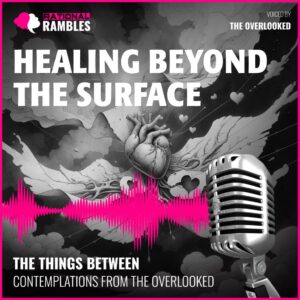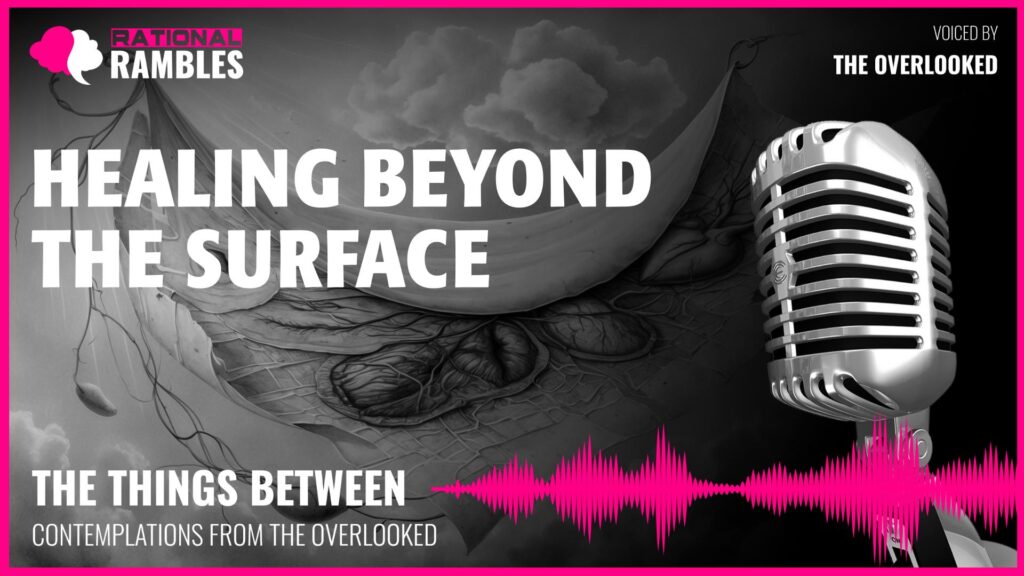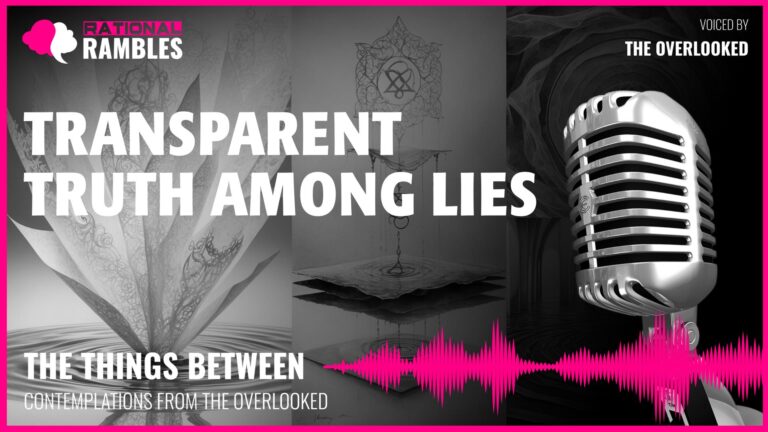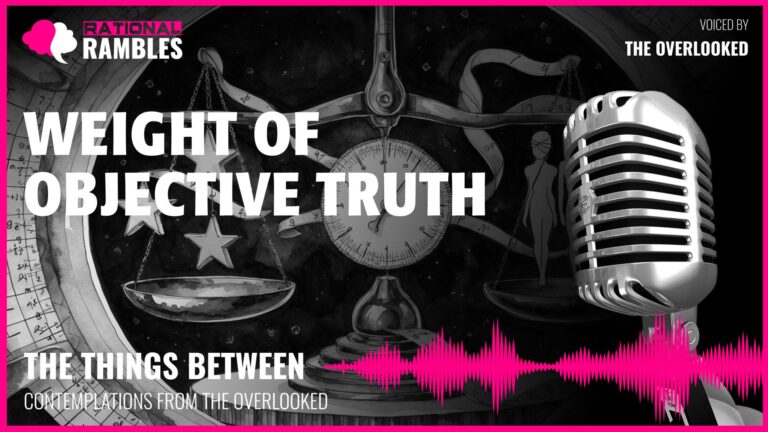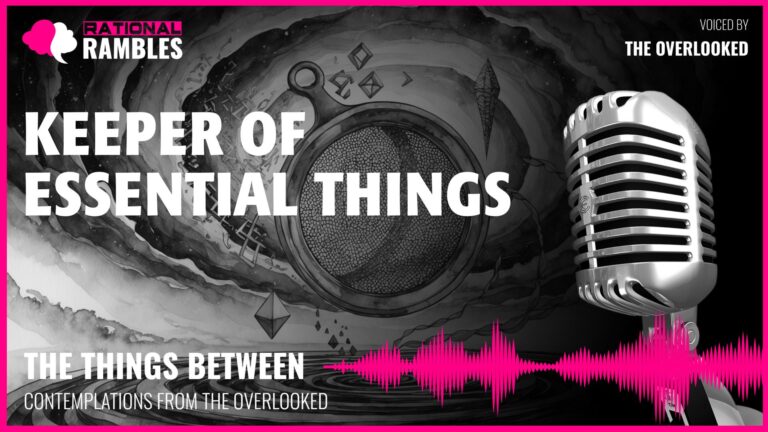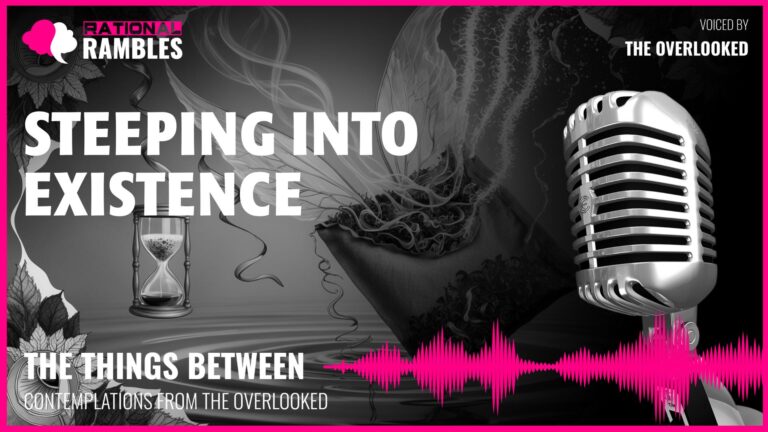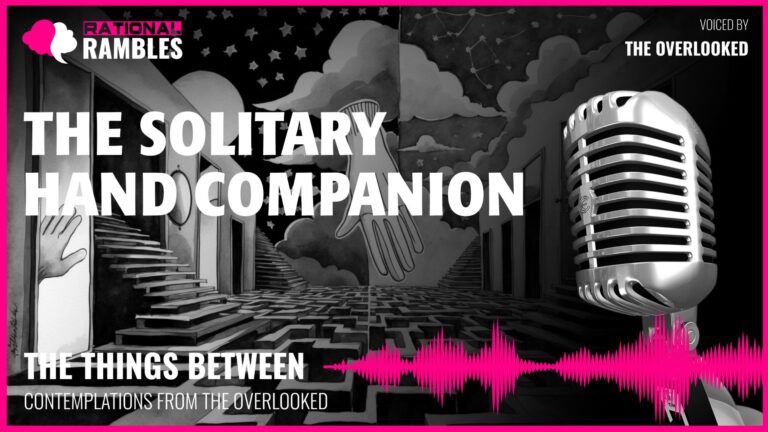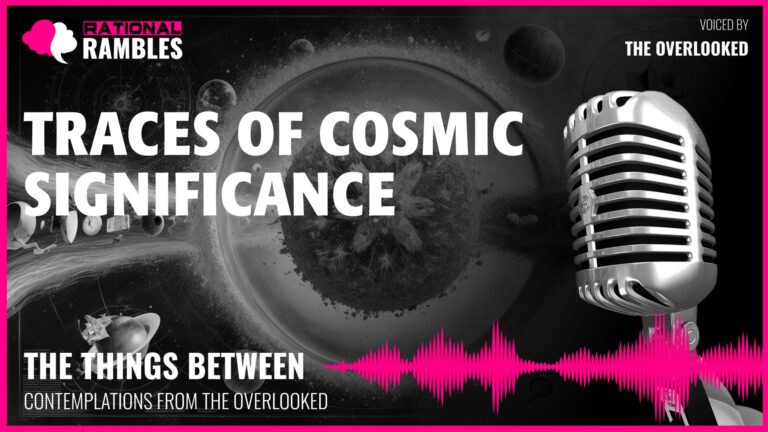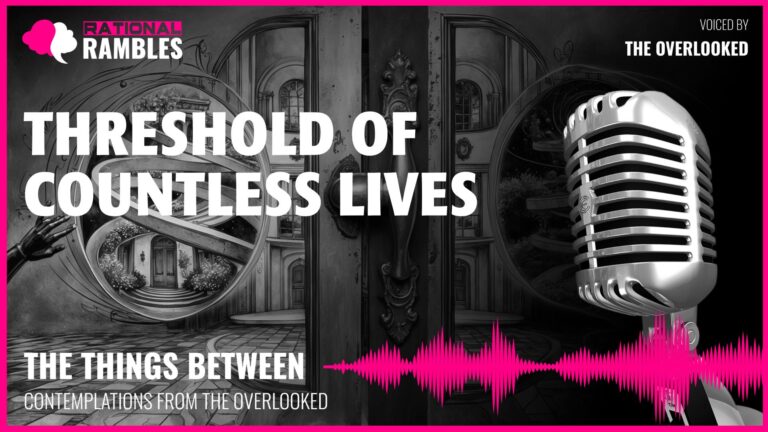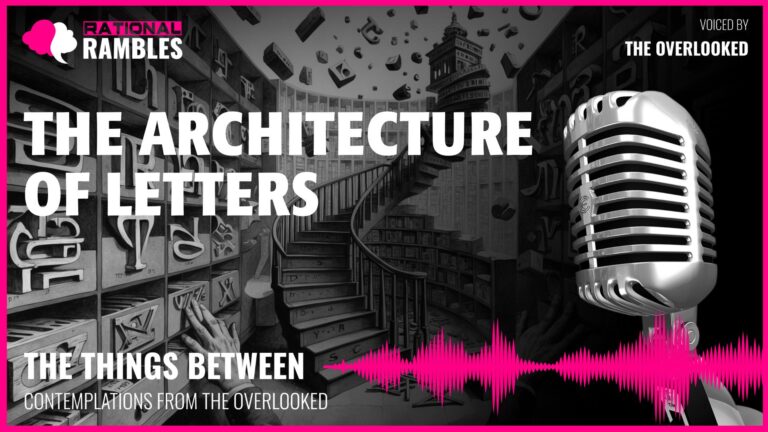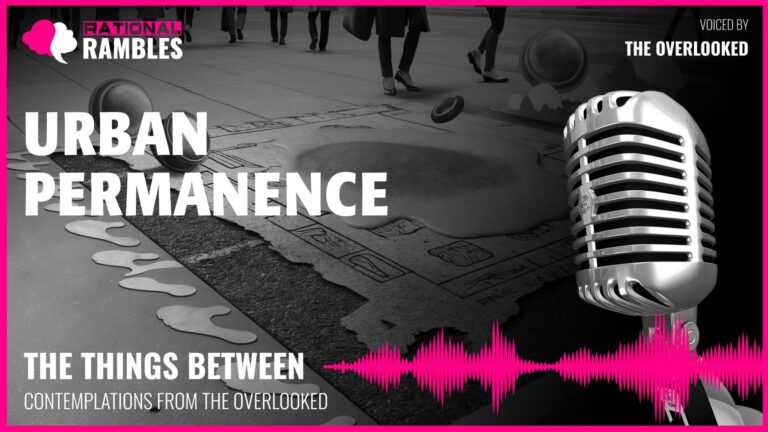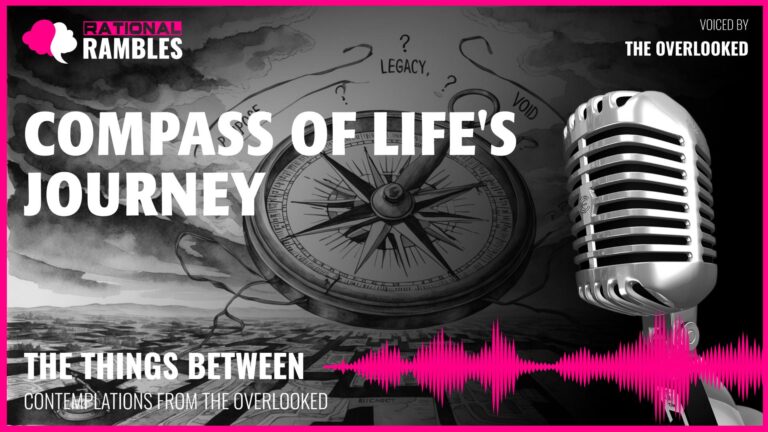The Vulnerability Paradox: Exploring the Nature of Wounds and Healing
Introduction
There exists a profound paradox at the heart of the human experience: our deepest vulnerabilities are simultaneously the sources of our greatest pain and our most profound healing. We instinctively conceal our wounds—both physical and emotional—yet true healing often requires acknowledgment, exposure, and integration of these very injuries into our larger narrative. This tension between concealment and revelation, between protection and exposure, creates a complex relationship with our own vulnerability that shapes how we approach healing in all its forms.
The process of healing transcends the merely physical. While a cut on the skin follows predictable biological pathways to restoration, the meaning we attach to our wounds—the stories we tell about them, the ways we choose to display or hide them, the care we give or receive in tending to them—reveals something fundamental about our understanding of vulnerability itself. What does it mean to be wounded? What constitutes true healing? And how does our approach to physical injuries mirror our handling of emotional traumas?
This article examines the philosophy of vulnerability and healing, exploring how the visible and invisible wounds we carry become integrated into our identities. From the intimate act of tending to another’s pain to the creation of protected spaces where natural healing can occur, we’ll consider how these seemingly simple interactions reveal profound truths about human connection, compassion, and the journey toward wholeness.
The Ontology of Wounds
Before we can understand healing, we must first consider the nature of wounds themselves. What exactly constitutes a wound? In its most fundamental sense, a wound represents a breach of boundaries—a violation of the body’s integrity where something from outside has gotten in, or something from inside has gotten out. This breach creates vulnerability where there was once protection.
The Taxonomy of Injury
Our language reveals our complex relationship with bodily injury. We have developed an extensive vocabulary to describe wounds: cuts, scrapes, gashes, lacerations, abrasions, contusions, punctures. Each term carries subtle distinctions in meaning, reflecting different mechanisms of injury and degrees of severity. This linguistic specificity suggests that wounds hold a special place in human consciousness—they are not merely biological events but experiences laden with meaning.
The philosopher Drew Leder addresses this phenomenon in his work The Absent Body, noting that pain and injury force us into an acute awareness of our embodiment. In normal circumstances, we experience our bodies as “absent”—we look through them rather than at them as we engage with the world. Injury disrupts this absence, bringing the wounded body part into sharp focus. The wound becomes not merely a physical phenomenon but an existential one, reminding us of our fundamental vulnerability as embodied beings.
Visible and Invisible Wounds
Not all wounds announce themselves visibly. Some injuries occur beneath the surface, invisible to external observation yet profoundly impactful. A vaccine injection might leave no visible trace beyond a momentary puncture, yet we mark it as a site of significance. More profoundly, emotional and psychological wounds—grief, betrayal, trauma, loss—may leave no physical mark yet alter us fundamentally.
Jean-Paul Sartre observed that physical pain has an immediacy and localization that psychological suffering often lacks. When we cut our finger, we can point precisely to the source of distress. But when we experience heartbreak or grief, the pain seems to suffuse our entire being, resistant to precise location or simple remedy. Yet both types of wounds require attention and care to heal properly.
The philosopher Simone Weil explored this territory in her writings on affliction, suggesting that profound suffering affects the entire being—body, mind, and spirit. She wrote: “Affliction is an uprooting of life, a more or less attenuated equivalent of death.” In this way, wounds—whether visible or invisible—represent a kind of small death, a disruption of wholeness that calls for restoration.
The Temporality of Wounds
Wounds exist in time in a particular way. They have a narrative structure with a distinct beginning (the moment of injury), middle (the process of healing), and end (the resolution into either complete restoration or the formation of a scar). Yet this temporality is not simply linear. The wound exists simultaneously as present reality, future possibility (of healing), and past event (the moment of injury).
The philosopher Maurice Merleau-Ponty’s phenomenological approach helps us understand this complex temporality. The wounded body experiences time differently—the acute awareness of the present moment of pain, the anticipation of future healing, and the memory of unwounded wholeness coexist in a complex temporal experience.
Furthermore, wounds mark time in our personal narratives. They become reference points—”before the accident” or “after my surgery”—creating temporal landmarks in our autobiographical understanding. Like rings in a tree trunk, the scars we carry map the chronology of our lived experience.
The Phenomenology of Vulnerability
Vulnerability derives from the Latin vulnerare, meaning “to wound.” To be vulnerable is to be susceptible to wounding, to exist in a state where injury is possible. Yet vulnerability is not merely a negative state of risk; it is the necessary condition for many of our most profound human experiences.
The Paradox of Exposure
Our relationship with vulnerability is inherently paradoxical. We simultaneously reveal and conceal our wounds, announcing our pain while protecting its details. A bandage on the skin serves as a public declaration that “something has happened here” while simultaneously shielding the actual wound from view. This dual nature of revelation and concealment reflects our complicated relationship with vulnerability itself.
Philosopher Martha Nussbaum argues that our vulnerability is inseparable from our capacity for happiness and fulfillment. In The Fragility of Goodness, she explores how the very things that make us susceptible to suffering—our attachments to others, our embodiment, our temporal existence—are also the sources of our greatest joys. To eliminate vulnerability would be to eliminate much of what makes human life meaningful.
Yet we continue to approach vulnerability ambivalently. We celebrate the warrior who fights through pain while admiring the honesty of one who acknowledges weakness. We value stoicism yet crave authenticity. These contradictory impulses reflect our struggle to integrate vulnerability into our understanding of human strength and dignity.
Cultural Attitudes Toward Wounds
Our response to wounds is not merely personal but culturally encoded. Different societies have developed distinct attitudes toward the display and treatment of injuries. In some contexts, wounds are badges of honor—the athlete who plays through injury, the worker with calloused hands, the soldier’s battle scars. In others, wounds are signs of weakness to be concealed as quickly and completely as possible.
Developmental differences are equally notable. Children often display their injuries with a mix of pride and desire for comfort: “Look what happened!” Their wounds become stories, experiences to share rather than weaknesses to hide. At some point in development, many people—particularly in individualistic Western cultures—begin to conceal their injuries, reflecting an internalized belief that vulnerability compromises one’s social standing.
The medical anthropologist Arthur Kleinman observes that illness and injury are always experienced within cultural frameworks that determine their meaning. A wound is never merely a biological phenomenon but a culturally interpreted event embedded in systems of meaning. The same physical injury might be interpreted as a mark of courage, a punishment, a random misfortune, or a stigmatizing flaw depending on the cultural context.
Gender and Vulnerability
Cultural attitudes toward vulnerability often intersect with gender expectations. Traditional masculine norms in many societies discourage the acknowledgment of pain or need for assistance. “Real men” are expected to endure suffering silently, treating wounds as inconveniences to be ignored rather than injuries requiring care.
Feminist philosophers like Judith Butler have argued that this gendered approach to vulnerability reflects problematic assumptions about strength and independence. The pretense of invulnerability becomes a form of self-deception that denies the fundamental interdependence of human existence. Butler writes in Precarious Life that acknowledging our shared vulnerability might serve as the basis for ethical political communities.
The courage to acknowledge vulnerability rather than deny it may represent a more authentic form of strength—one that recognizes our common humanity rather than setting up false hierarchies based on the pretense of invulnerability.
The Ethics of Care
The treatment of wounds brings us directly into the territory of care ethics—a philosophical approach that places care relationships at the center of moral consideration. When we tend to wounds—our own or others’—we engage in one of the most fundamental forms of care, responding to vulnerability with attention and concern.
The Intimate Act of Tending to Wounds
There is a particular intimacy in the act of treating another person’s wound. This intimacy crosses conventional boundaries, allowing one person to touch another’s blood, to see exposed tissue, to access parts of the body normally hidden from view. The philosopher Emmanuel Levinas might describe this as an encounter with the absolute otherness of another person—an ethical moment where we recognize our responsibility to the vulnerable other.
The quality of this care reveals much about the relationship between caregiver and wounded. Some hands apply bandages with clinical efficiency, others with hesitant tenderness. Some focus solely on the biological wound, while others attend to the emotional experience of the wounded person. In each case, the manner of care communicates values and relationship quality beyond the mere technical act of wound treatment.
When care is administered with gentleness—the careful cleaning of the wound, the smooth application of a bandage, the comforting words that accompany the treatment—it becomes more than medical intervention. It becomes an affirmation of worth, a declaration that the wounded person’s comfort and well-being matter.
Self-Care and Other-Care
There is a profound difference between treating one’s own wounds and having them treated by another. Self-care requires a kind of doubling of attention—becoming simultaneously the wounded and the healer. This mirrors philosophical questions about self-knowledge and self-relation that have occupied thinkers from Socrates to Foucault.
When we treat our own wounds, we engage in what Michel Foucault might call “technologies of the self”—practices through which we modify our own bodies and experiences. The act becomes both intimate and strangely distanced, as we observe our own vulnerability from the dual perspective of the experiencing subject and the treating agent.
When others treat our wounds, we enter into a relationship of trust and dependency. We must believe that they see our injury accurately, that they will touch us with appropriate care, that they will protect rather than exploit our vulnerability. This surrender of control represents a fundamental form of trust in another’s beneficence.
Care as Creating Protected Space
One of the most essential aspects of wound care is the creation of protected space—a microenvironment where healing can occur undisturbed. A bandage creates this literal space over a physical wound: dark, warm, protected from external interference.
This physical reality serves as an apt metaphor for what all forms of healing require: a safe container within which recovery can unfold at its own pace. Psychological healing similarly requires safe spaces—relationships or environments where vulnerability is respected rather than exploited, where pain can be acknowledged without shame, where the natural process of recovery is granted the time and conditions it needs.
The psychoanalyst Donald Winnicott described the concept of a “holding environment”—a psychological space originally provided by the “good enough mother” that allows the child to experience both security and freedom to develop. All forms of healing require such holding environments—contexts where we are simultaneously protected and allowed to undergo the sometimes difficult process of transformation.
The Temporality of Care
Care for wounds has its own temporal structure. It requires timely response to injury, consistent attention during healing, and eventually a withdrawal of protective measures as healing completes. Wisdom in care involves discerning the appropriate timing for each of these phases—knowing when to protect and when to expose, when to intervene and when to allow natural processes to unfold.
This wisdom applies equally to physical and emotional wounds. Premature exposure can disrupt healing and cause additional harm. Excessive protection beyond the necessary period can inhibit full recovery. The philosopher Hans-Georg Gadamer explored the concept of the “right time” (kairos) in his work on hermeneutics, suggesting that understanding always occurs within temporal horizons that cannot be arbitrarily accelerated or delayed.
Care thus requires not only technical knowledge of how to treat wounds but also the practical wisdom to discern the appropriate timing for different forms of intervention and withdrawal.
The Process of Healing
Healing is often misunderstood as simply the return to a previous state of wholeness. A more nuanced understanding recognizes healing as transformation rather than mere restoration—the integration of the wound experience into a new form of wholeness.
Beyond Restoration: Healing as Transformation
When tissue heals, it never returns exactly to its previous state. Scar tissue has different properties than the original tissue it replaces. It may be stronger in some ways, more vulnerable in others, but it is fundamentally changed. This physical reality serves as a powerful metaphor for all forms of healing.
The philosopher Friedrich Nietzsche captured this transformative aspect of suffering in his famous aphorism: “What doesn’t kill me makes me stronger.” While this statement oversimplifies the complex reality of trauma and recovery, it points to the potential for wounds to become sites of transformation rather than merely damaged places to be restored.
In The Wounded Storyteller, sociologist Arthur Frank explores how illness narratives often follow this transformative pattern. The experience of serious illness doesn’t merely interrupt a life story to be resumed once health returns; it fundamentally alters the narrative, creating what Frank calls a “narrative wreckage” that must be reconstructed into a new story that incorporates the wound experience.
The Stages of Healing
Physical wound healing follows a predictable biological sequence: hemostasis (clotting), inflammation, proliferation (new tissue growth), and remodeling. Each stage serves a necessary function and unfolds in its own time. Disruption of any stage can compromise the entire healing process.
Emotional healing follows less precisely defined but equally important stages. Models like Elisabeth Kübler-Ross’s stages of grief (denial, anger, bargaining, depression, acceptance) attempt to map this territory, though actual experience rarely follows such linear progressions neatly. What these models share is recognition that healing is a process with distinct phases, each serving necessary functions that cannot be bypassed without consequence.
Interestingly, many healing processes involve discomfort not only in the initial injury but in the healing itself. The itch of a healing wound, the emotional turbulence of processing grief, the discomfort of physical therapy after surgery—all suggest that healing is not a passive, comfortable process but an active, sometimes challenging one.
The Paradoxical Comfort of Pain
Pain serves a crucial biological function, alerting us to injury and preventing further damage. The rare individuals born with congenital insensitivity to pain suffer frequent, severe injuries because they lack this protective mechanism. Pain forces attention to wounds that might otherwise be ignored until they become life-threatening.
Beyond this biological function, pain serves as an authenticator of experience. The philosopher Ernst Jünger observed that in a world where many experiences seem mediated and distant, pain remains immediately, undeniably real. It pierces through abstraction and returns us to the concrete reality of embodied existence.
This may partially explain why the pain of healing—the sting of antiseptic, the ache of physical therapy, the emotional intensity of grief work—sometimes carries its own strange comfort. It confirms the reality of both the wound and the healing process, anchoring abstract concepts like “recovery” and “healing” in undeniable bodily experience.
The Role of Narrative in Healing
Humans are storytelling creatures. We make sense of our experiences, including our wounds, by incorporating them into narratives. A physical injury becomes more than a biological event when we can say: “I got this scar climbing mountains in Peru” or “This happened when I was protecting someone I love.”
The psychologist Jerome Bruner argued that narrative is not merely a way of describing experience after the fact but a fundamental mode of thought through which we organize and understand experience as it occurs. Our wounds become meaningful when they become part of a coherent story about who we are and what matters to us.
When wounds cannot be integrated into meaningful narratives, healing may be compromised. Traumatic experiences often resist narrative integration precisely because they overwhelm our meaning-making capacities. Trauma theorist Cathy Caruth describes trauma as “an event that is experienced too soon, too unexpectedly, to be fully known.” Part of trauma healing involves the gradual construction of narratives that can contain and make meaning of these overwhelming experiences.
Scars: The Biography of the Body
If wounds represent acute disruptions of bodily integrity, scars mark the successful integration of these disruptions into the continuing story of the body. They are not failures of perfect healing but rather visible reminders of the body’s remarkable capacity for renewal and adaptation.
The Meaning of Marks
Scars tell stories. They map a history of encounters with the world—accidents, surgeries, acts of violence or courage, childbirth, sports injuries, childhood adventures. In this way, they function as a kind of bodily autobiography, inscribing experiences directly onto the skin.
The anthropologist Terence Turner developed the concept of the “social skin”—the idea that the body’s surface is a text upon which social meanings are inscribed. Scars, whether deliberately created (as in some cultural scarification practices) or accidentally acquired, become part of this social text, communicating aspects of personal history to others.
Our relationship with our scars reveals much about our broader relationship with imperfection and mortality. Some display their scars proudly as badges of experience or survival. Others conceal them, embarrassed by these markers of past vulnerability. Some seek cosmetic treatments to minimize visible scars, while others incorporate them into their self-image as distinctive features of their embodied identity.
The Ethics of Scar Visibility
The question of whether to display or conceal scars raises interesting ethical questions about authenticity, social conformity, and the right to privacy about one’s bodily history. In a culture that often equates unblemished appearance with worth, the choice to display visible scars can become a political act—a rejection of narrowly defined beauty standards and an assertion of the value of lived experience.
On the other hand, the choice to conceal scars may reflect legitimate desires for privacy or control over one’s narrative. Just as we don’t owe others access to all our personal stories, we don’t necessarily owe visibility of our bodily histories.
The philosopher Susan Wendell, writing about her experience of chronic illness in The Rejected Body, argues for recognition of the “healthy disabled”—people who have integrated their bodily differences into functional, meaningful lives without pretending to match normative ideals of physical perfection. This perspective suggests that the ethical question is not whether to display or conceal scars but whether we can develop more inclusive understandings of embodiment that recognize various forms of bodily history as part of normal human diversity.
Absence of Scars: The Unmarked Body
The absence of visible scars represents its own kind of bodily narrative. A body without significant marks may suggest a life protected from physical harm—a privilege not equally available across social categories. It may reflect access to advanced medical care that minimizes scarring or cosmetic procedures that reduce scar visibility.
The philosopher Pierre Bourdieu’s concept of “bodily hexis”—the way class and social position become literally incorporated into the body—helps us understand how even our scars (or their absence) reflect social location. Manual laborers often carry visible markers of their work on their bodies, while those in protected professions may remain relatively unmarked.
The valorization of the unmarked body—smooth, unblemished, young-appearing—reflects particular cultural values and power structures rather than universal aesthetic truths. Alternative aesthetics that recognize beauty in the visibly lived-in body offer important counterpoints to these dominant narratives.
Invisible Wounds and Silent Suffering
While physical wounds announce themselves visibly, demanding attention and care, many of life’s most profound injuries leave no visible trace. These invisible wounds—psychological trauma, grief, betrayal, spiritual crises—often receive less immediate attention precisely because they lack visible manifestations.
The Challenges of Unseen Pain
Invisible suffering presents unique challenges. Without visible markers, others may fail to recognize the wound’s existence or severity. The sufferer themselves may struggle to legitimate their own experience without external validation. While no one questions the reality of a bleeding cut, emotional and psychological pain is often subject to doubt or dismissal.
The philosopher Elaine Scarry explores this problem in The Body in Pain, noting that physical pain resists linguistic expression and external verification. It is simultaneously undeniable to the person experiencing it and questionable to outside observers. This problem is magnified for psychological pain, which lacks even the indirect visibility of physical distress.
Society often imposes a burden of proof on those with invisible wounds, requiring them to demonstrate or perform their suffering to receive recognition and support. This creates what disability theorists call “the paradox of visibility”—the need to make private suffering public to access needed accommodations, while risking stigmatization through this very disclosure.
Metaphors and Manifestations
In the absence of direct visibility, invisible wounds often become expressed through metaphor or physical manifestation. We speak of “broken hearts,” feeling “torn apart” by grief, or being “wounded” by betrayal. These metaphors are not merely linguistic conventions but reflect the embodied nature of all experience—even emotional suffering is felt physically.
The field of psychosomatic medicine recognizes that psychological suffering often manifests through physical symptoms—headaches, fatigue, digestive disturbances, muscle tension. These manifestations might be understood as the body’s attempt to make invisible wounds visible, to give concrete form to suffering that otherwise remains abstract and unacknowledged.
The philosopher Maurice Merleau-Ponty’s phenomenology helps us understand this mind-body connection, rejecting Cartesian dualism in favor of an understanding of human existence as fundamentally embodied. From this perspective, the distinction between “physical” and “psychological” wounds becomes less absolute—all wounds affect the whole person.
Healing the Unseen
If invisible wounds share important characteristics with physical injuries, their healing likewise shares certain requirements. Just as physical wounds need protection, cleansing, and time, psychological wounds require safe spaces for processing, emotional expression, and patience with the healing timeline.
Psychological healing particularly depends on what trauma specialist Judith Herman calls “witnessing”—the compassionate acknowledgment of suffering by others. While a physical wound can heal in isolation (though even here, social support improves outcomes), emotional wounds seem to require relational healing—the experience of having one’s pain recognized and validated by others.
Various therapeutic approaches attempt to provide this witnessing function, creating protected spaces where invisible wounds can be safely revealed and tended. At their best, these approaches recognize that healing invisible wounds requires not merely technique but presence—the willingness to accompany another person in their suffering without premature attempts to fix or diminish it.
The Intersubjectivity of Healing
While healing is often described as an individual process, it fundamentally occurs within a relational context. Our wounds and our healing are shaped by our connections with others, whether as causes of injury, sources of care, or witnesses to our recovery.
The Witness Function
To witness another’s wound is a profound ethical act. It requires acknowledging suffering without turning away, remaining present without attempting to prematurely resolve discomfort. The philosopher Emmanuel Levinas describes the encounter with the suffering other as the foundation of ethics—a moment when we recognize our responsibility to respond to vulnerability.
The quality of witnessing significantly impacts healing outcomes. When wounds are acknowledged with compassion rather than judgment, shame or minimization, the wounded person experiences validation that supports integration of the experience. Conversely, when wounds are denied, dismissed, or met with blame, healing may be compromised.
This witnessing function operates at social as well as individual levels. Societies that acknowledge historical traumas through memorials, commemorations, or truth and reconciliation processes create conditions where collective healing becomes possible. Those that deny or minimize historical wounds often perpetuate intergenerational trauma.
Trust and Vulnerability in the Healing Relationship
To allow another person to treat one’s wound requires remarkable trust—belief that they will touch pain with care rather than carelessness, that they will respect rather than exploit vulnerability. This trust becomes even more significant with invisible wounds, where the injured person must first choose to reveal suffering that could otherwise remain hidden.
The philosopher Annette Baier defines trust as “accepted vulnerability to another’s possible but not expected ill will.” In the context of healing relationships, this definition highlights the risk involved in allowing others access to our wounds. We must believe that they will use this access for healing rather than harm.
The betrayal of this trust—through careless treatment, violation of confidence, or exploitation of vulnerability—can create secondary wounds that compound the original injury. This explains why many people become increasingly reluctant to reveal vulnerability after experiences of having their trust betrayed in previous attempts to seek care.
The Dance of Protection and Exposure
Healing relationships involve a delicate balance between protection and exposure. The wound must be protected from further injury but exposed enough to allow necessary interventions. Too much protection prevents adequate treatment; too much exposure risks additional trauma.
This balance requires ongoing communication and consent. The wound-bearer must retain agency in determining how much exposure they can tolerate at any given time. The care-provider must respect these boundaries while gently encouraging the exposure necessary for healing when the wounded person is ready.
The psychiatrist and Holocaust survivor Viktor Frankl observed that suffering ceases to be suffering when it finds meaning. This suggests that the role of the witness or healer is not to eliminate pain but to help create contexts where it can be experienced as meaningful rather than merely destructive—integrated into a larger narrative that preserves dignity and purpose.
Cultural Dimensions of Wounding and Healing
Our understanding of wounds and healing is never purely individual but always shaped by cultural contexts. Different societies develop distinct approaches to vulnerability, pain, and recovery that influence individual experiences of injury and healing.
Diversity in Medical Approaches
Even seemingly simple medical technologies like bandages reflect cultural assumptions. The standard “skin-colored” bandage reveals presumptions about whose skin is considered normative. The recent development of bandages in multiple skin tones represents a recognition of this bias and an attempt to create more inclusive approaches to wound care.
More broadly, different cultural and medical traditions conceptualize wounds and healing through distinct frameworks. Western biomedicine tends to focus on the mechanical aspects of injury and repair, while traditional Chinese medicine might emphasize the disruption and restoration of energy flow. Indigenous healing traditions often address spiritual and community dimensions of wounding alongside physical treatment.
These different approaches are not merely technical variations but reflect fundamental philosophical differences in understanding the relationship between body, mind, community, and environment. As medical anthropologist Margaret Lock argues, even biology itself is “local”—shaped by cultural contexts rather than existing as a universal, culture-free substrate.
Ritualization of Healing
Across cultures, the treatment of wounds is often ritualized—embedded in practices that carry meaning beyond their technical functions. The application of a bandage by a parent to a child’s scraped knee becomes a ritual of comfort and care that teaches the child about how pain is addressed in their culture.
More elaborate healing rituals exist across traditions: the laying on of hands, ceremonial treatments by shamans or medicine people, religious blessing of the sick. These rituals serve multiple functions, addressing not only physical injuries but their meaning within social and spiritual contexts.
The anthropologist Victor Turner analyzed rituals as “social dramas” that help communities process disruptive events and reintegrate affected individuals. Healing rituals can serve this function, transforming private suffering into shared meaning and restoring social connections that injury might otherwise disrupt.
Collective Trauma and Social Healing
Some wounds affect not just individuals but entire communities or societies. War, genocide, natural disasters, systemic oppression, and historical injustices create collective traumas that require collective healing processes.
Traditional Western approaches to trauma often focus on individual treatment, reflecting cultural emphases on personal rather than collective identity. However, many Indigenous and non-Western traditions recognize that healing from collective trauma requires community-based approaches that address disrupted social bonds and damaged cultural systems.
The psychologist Kai Erikson describes collective trauma as “a blow to the basic tissues of social life that damages the bonds attaching people together and impairs the prevailing sense of communality.” Healing such wounds requires not just individual treatment but restoration of these communal bonds and collective meaning systems.
Models like truth and reconciliation commissions, community memorials, and collective mourning practices represent attempts to address wounds at this social level. Their effectiveness depends partly on whether they create what political philosopher Nancy Fraser calls “parity of participation”—ensuring that all affected parties have genuine voice in the healing process.
Technology, Vulnerability, and Future Healing
As medical technology advances, our relationship with wounds and healing continues to evolve. New approaches to wound treatment, scar prevention, and pain management offer unprecedented control over the healing process, raising both opportunities and philosophical questions.
The Promise and Limits of Technical Control
Modern medicine offers remarkable tools for accelerating and directing the healing process: advanced dressings that create optimal wound environments, bioengineered skin substitutes, laser therapies for scar reduction, and sophisticated pain management techniques. These technologies can significantly improve healing outcomes and reduce suffering.
However, technological approaches sometimes risk reducing wounds to merely technical problems, overlooking their existential and relational dimensions. The philosopher Martin Heidegger warned about the “technological enframing” of human experience—a perspective that sees everything, including the body, as a resource to be optimized rather than a subject with inherent meaning and dignity.
The challenge lies in integrating technological advances with humanistic approaches that recognize wounds as more than biological disruptions. The bioethicist Daniel Callahan argues for an understanding of medicine that balances technical progress with attention to meaning, relationship, and acceptance of fundamental human limitations.
Virtual Wounds and Digital Healing
Increasingly, our wounds and healing processes extend into virtual spaces. Online support communities create places where people with invisible wounds can find validation and understanding. Social media platforms become venues for sharing injury and recovery narratives. Telehealth services provide remote access to treatment guidance.
These virtual healing spaces offer new possibilities for connection across barriers of geography, mobility, and social stigma. They allow people to find communities of shared experience that might not be available in their immediate environment.
Yet digital healing environments present their own challenges. The philosopher Hubert Dreyfus questioned whether genuinely embodied understanding can occur in disembodied digital spaces. Virtual communities may provide valuable support but lack the physical presence that some forms of healing seem to require.
The challenge of digital healing environments parallels broader questions about technology and embodiment—how to create meaningful connection across spatial separation, how to communicate care without physical presence, how to balance the benefits of virtual access with the continued importance of embodied interaction.
Transhumanism and the Transcendence of Vulnerability
Some transhumanist visions propose overcoming human vulnerability altogether through technological enhancement. These perspectives imagine future humans who are resistant to injury, disease, and aging—beings for whom healing becomes unnecessary because wounding becomes impossible.
Philosophers like Nick Bostrom argue that such technological transcendence of biological limitations represents a desirable evolution of human potential. Others, like Michael Sandel in The Case Against Perfection, suggest that vulnerability and imperfection are essential aspects of human experience that ground important values like compassion, care, and solidarity.
This debate raises fundamental questions about the relationship between vulnerability and humanity. If we could eliminate the possibility of wounding, would we lose something essential about human experience? Or would freedom from biological vulnerability allow new forms of human flourishing?
Perhaps most profoundly, it raises questions about whether invulnerability is truly possible or merely an illusion that redirects vulnerability into less visible forms. Even the most technologically enhanced beings would presumably remain vulnerable to relational wounds, ethical failures, or existential distress.
Toward a Philosophy of Wholeness
How we understand wholeness fundamentally shapes our approach to wounding and healing. Is wholeness the absence of wounds, the perfect restoration of a previous state? Or might it be something more complex—the integration of wounds into a larger narrative of meaning and purpose?
Beyond Perfectionism: Integrating Damage
Many Western approaches to health reflect implicit perfectionism—the ideal body is unblemished, unwounded, unmarked by experience. This perspective frames healing as the erasure of injury and scars as unfortunate reminders of imperfect recovery.
Alternative perspectives suggest that true wholeness incorporates rather than erases the evidence of wounding. The Japanese aesthetic tradition of kintsugi—repairing broken pottery with gold to highlight rather than hide the repair—offers a powerful metaphor for this integrative approach to healing. The repaired object becomes more beautiful and valuable precisely because it has been broken and mended.
Similarly, the philosopher Friedrich Nietzsche’s concept of amor fati—love of fate, including its painful aspects—suggests an approach to life that incorporates suffering into a larger affirmation rather than treating it as an aberration to be eliminated. From this perspective, wholeness comes not from avoiding or erasing wounds but from allowing them to become meaningful parts of our story.
Vulnerability as Strength
Conventional wisdom often equates strength with invulnerability—the capacity to resist wounding or to conceal it when it occurs. An alternative perspective recognizes vulnerability itself as a form of strength—the courage to acknowledge wounds, to seek help when needed, to remain open to experience despite the risk of pain.
The research of social scientist Brené Brown has explored this paradoxical relationship between vulnerability and strength. Her studies suggest that people who can embrace vulnerability tend to demonstrate greater resilience than those who attempt to armor themselves against all possibility of injury.
This perspective reframes the ethical ideal from the invulnerable hero to what philosopher Martha Nussbaum might call “the fragile good human life”—a life that accepts vulnerability as the necessary condition for love, connection, growth, and meaning.
From Cure to Healing
Medical anthropologists have noted an important distinction between “curing” and “healing.” Curing focuses on eliminating disease or repairing physical damage. Healing addresses the broader experience of the person, including the meaning of illness or injury within their life narrative.
Not all wounds can be cured in the sense of complete restoration to a previous state. Chronic conditions, permanent injuries, and terminal illnesses may resist cure. Yet healing—in the sense of finding meaning, maintaining dignity, and experiencing care within these conditions—remains possible.
This distinction is captured in the words of the physician Rachel Naomi Remen: “Wounding and healing are not opposites. They’re part of the same thing. It is our wounds that enable us to be compassionate with the wounds of others. It is our limitations that make us kind to the limitations of others.”
This perspective suggests that wounds, properly integrated, can become sources of wisdom, compassion, and connection rather than merely damaged places to be hidden or fixed. The wounded healer—a concept explored by psychologist Carl Jung and theologian Henri Nouwen—becomes not a contradiction but the embodiment of healing’s deepest possibility.
Conclusion: The Dignity of Transience
At the heart of all wounds lies a fundamental truth about human existence: we are finite, vulnerable beings whose bodies and hearts are susceptible to injury. Yet within this vulnerability lies remarkable capacity for renewal, transformation, and meaning-making.
The temporary nature of wound protection—the bandage that is eventually removed, the splint that is taken off when the bone has healed—reflects a broader truth about healing. It is not a permanent state but a transition, a process through which we integrate experiences of damage into our continuing life story.
Perhaps there is dignity in this transience—in being creatures who can be wounded and who can heal, who require care and who can provide it, who bear visible and invisible scars as testaments to our journey through a world that both damages and nurtures us.
Our wounds, whether physical or emotional, remind us of our fundamental interconnection. We are beings who affect and are affected by others, whose boundaries are permeable, whose well-being depends on care received and given. This interconnection is both our greatest vulnerability and our greatest strength.
In the end, wounds and healing reveal essential truths about human existence that might otherwise remain abstract: our embodiment, our temporality, our dependence on others, our capacity for care, our ability to make meaning from suffering. By attending thoughtfully to these experiences, we may discover not only practical wisdom about recovery but deeper insights into what it means to be fully human in a world where vulnerability and healing are inescapable dimensions of our shared journey.


